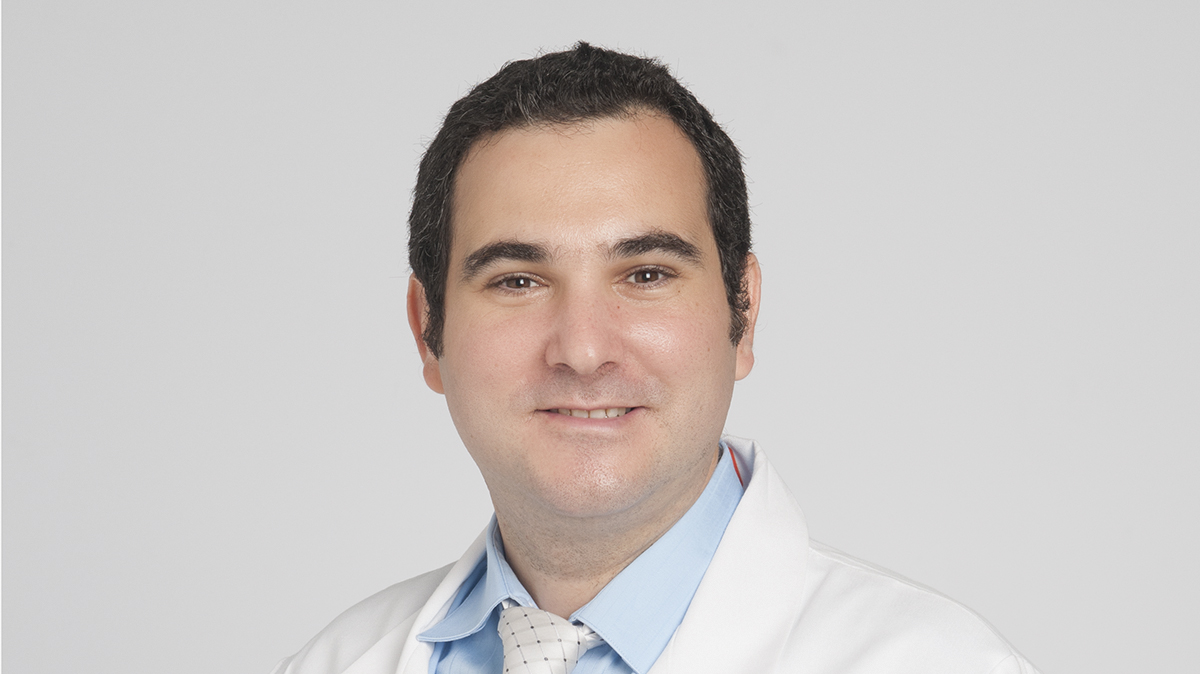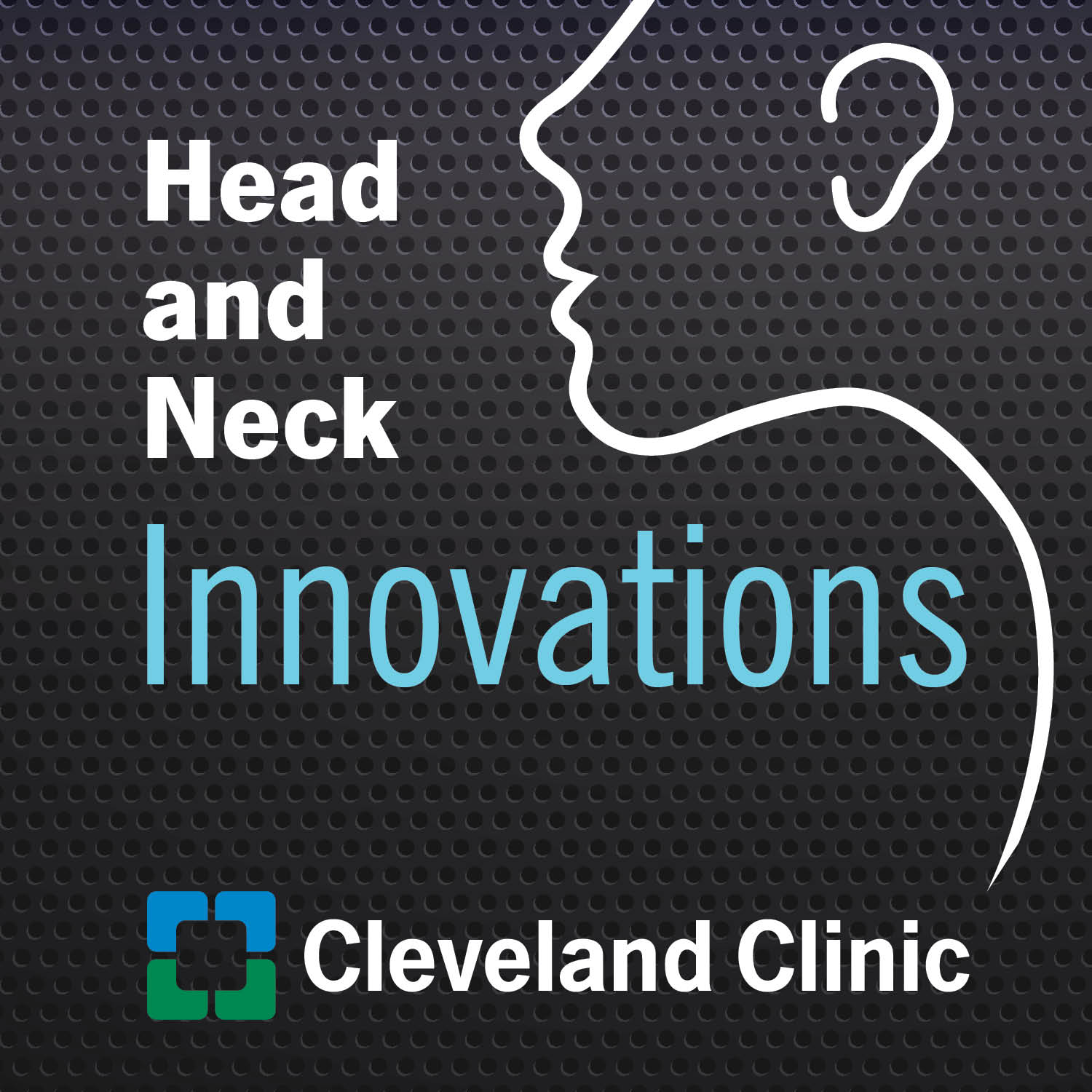Cleveland Clinic's Biorepository and Updates in Sinus Research

Mohamad Chaaban, MD, Research Director of the Head and Neck Institute at Cleveland Clinic, joins to discuss his investigation into the impact of obesity on chronic rhinosinusitis - a common sinus condition that affects approximately 31 million people in the United States. Dr. Chaaban also previews some upcoming clinical trials using biologics.
Subscribe: Apple Podcasts | Podcast Addict | Spotify | Buzzsprout
Cleveland Clinic's Biorepository and Updates in Sinus Research
Podcast Transcript
Paul Bryson: Welcome to Head and Neck Innovations, a Cleveland Clinic podcast for medical professionals exploring the latest innovations, discoveries and surgical advances in otolaryngology head and neck surgery.
Thanks for joining us for another episode of Head and Neck Innovations. I'm your host, Paul Bryson, Director of the Cleveland Clinic Voice Center. You can follow me on Twitter @PaulCBryson, and you can get the latest updates from Cleveland Clinic Otolaryngology - Head and Neck Surgery by following @CleClinicHNI on Twitter, that's CleClinicHNI. And new this year, find us on LinkedIn at Cleveland Clinic Otolaryngology - Head and Neck Surgery, and Instagram at Cleveland Clinic Otolaryngology.
Today I'm looking forward to speaking with Dr. Mohamad Chaaban, a rhinologist and the research director of Cleveland Clinic's Head and Neck Institute. Dr. Chaaban, welcome to Head and Neck Innovations.
Mohamad Chaaban: Thank you so much. Thank you for inviting me, Dr. Bryson.
Paul Bryson: Lots of interesting things happening in this space. And so, I wanted to have you start by just sharing some background on yourself for our listeners. Where you're from, where you are trained, how you came to Cleveland Clinic.
Mohamad Chaaban: Thank you so much. So, I'm originally from Lebanon. I graduated from the American University of Beirut, and I completed a residency at the University of Chicago and followed by a fellowship in Rhinology at the University of Alabama, Birmingham. And after my fellowship, my first job was in Texas, University of Texas. And I spent four years there, and an opportunity came up at the Cleveland Clinic, which involved research and was very exciting for me. And I've been here, right before COVID, in 2019. I still remember those days before COVID. So, I'm glad now we're almost back to normal.
Paul Bryson: Yes, and it feels good. And it's been great to have you come on board and to see just some of the dedicated work that you've been doing, not only in your areas of interest in Rhinology and skull-based surgery, but also just some of the initiatives you've undertaken for the institute in really trying to build the infrastructure and organization for our research efforts. It's very commendable and starting to bear fruit. It's a lot of work. One of the ones I wanted to highlight is that I understand that you and your colleagues recently received Cleveland Clinic's 2023 Biorepository Award for a unique and novel proposal on the influence of obesity, adipokines and insulin resistance on chronic rhinosinusitis, with and without asthma phenotypes. And just to highlight to the listener the significance of this, it's actually the first time our Head and Neck Institute has been a part of the enterprise Biorepository building. Can you talk about the Biorepository and the goals of this building, and as well as how your team's research effort fits into it?
Mohamad Chaaban: Absolutely. Thank you. And yes, I agree, this is the first time that we received such an award and it's interesting about the building, because it's the first building to open as part of the Cleveland Clinic Innovation District, which is really an engine for northeast Ohio into really innovative research. And that was the first building, and we are so excited to be part of it as HNI. And the Biorepository, just to explain the term, is like a library where we have samples to be used for research, stored for research. The BIOR building is, as I said, a new building. It's managed by inter-life sciences. It's about 22,000 square feet, brand new beautiful building that houses those samples that are used for research purposes, like a library. So, the primary reason this building was made a Biorepository is to really collect samples for future research, for precision medicine research, to help find out how we can treat our patients better. Not every patient is the same, and the more we know about how lifestyle, genetic and environmental influences on the diseases, the more we can take care of our patients. So, I'm very excited about that being offered for us in this particular grant.
In terms of how these fit in for our team is basically, as you know, sinus surgery and endoscopic cell-based surgeries are one of the most common procedures we do. More than eight physicians in our group do sinus surgery, so we do have a lot of samples and a lot of tissue is just either discarded or not used. And we found the opportunity would be there too, given it's a very common procedure to use those samples and collect them in the hopes of furthering our research. Particularly in this would be looking at obesity in that particular project, but we're storing them for future use for any researchers to be used for future research as well. So, I found that was a pretty exciting opportunity that really fit well with our team's effort to collect these samples and get really great support from Cleveland Clinic's team managing the samples and our ability to store them for a long-term period and conduct experiments in the future.
Paul Bryson: Yeah, I think that's really exciting. As listeners and people know, tests that you might run on these samples, maybe they are still being refined or they don't exist yet, and to have that infrastructure and to have that library, if you will, for future testing is probably just as exciting as the current project is.
Mohamad Chaaban: Absolutely. I agree with you. Absolutely.
Paul Bryson: What are some of the insights you hope to learn from this study? Anything specific? I know there's a number of different things in the proposal, but what are some highlights that you're most excited about?
Mohamad Chaaban: So, the way this came about is basically I found some differences in the inflammation in people who are CRS patients, chronic sinusitis, patients with obesity and the inflammatory pattern was a little different. So, I felt the need that we need to have a large sample of many, many patients that we can take a look at and see how we can help them better, because they respond differently to treatment. And that was how it came about. My hope is to get a more personalized approach for the patients and get them into treatment algorithms that may be different than what we are offering right now for our patients. And that would be the ultimate goal. I hope we reached there, but that grant is a start for our hard work in getting there.
Paul Bryson: Yeah, it's very exciting and we really look forward to seeing what you and the team can learn and contribute. What else is on the horizon for your group as far as research is concerned? Anything else that you wanted to highlight from some of your other research initiatives?
Mohamad Chaaban: Absolutely. So as part of this, also just this Biorepository sample collections, we are looking at a local inflammation and not every patient is the same. And we're trying to identify, not necessarily just from an obesity standpoint, but what are the inflammatory patterns for patients and how can we be able to classify them more appropriately, according to their endotypes. So, this would be future precision medicine care for our patients down the line.
We are also conducting clinical trials, which are really key for our treatment approaches to the patients. We are running clinical trials on biologics. We have two trials going on right now, comparing biologics between each other, basically, and these biologics are really, we think about them like a very highly specific treatment for our chronic sinusitis patients. Think about steroids, how they attack every immune cell. The biologics attack only part of the inflammatory pattern in chronic sinusitis, it's very highly specific and its key for targeted treatments. So, we would love to have the results soon and to share with everyone which biologics are best fit for certain patients.
Paul Bryson: Well, that's exciting. I'll look forward to that. It's a great option for maybe the patient that has just really struggled and hasn't responded to maybe more traditional treatments, to look at some of these clinical trials. So yeah, really congratulations to your group for trying to push science forward and to push the treatments forward. As we wrap up, can you give us any final take home messages for our listeners about your program or other things that you wanted to highlight?
Mohamad Chaaban: Absolutely. The main highlight I would like to talk about that opportunities that are coming out of this Biorepository grant is the samples will be used by everyone, which is, I went there and thought about how many people may use them, how many scientists will use them, and it would be... It's very exciting. We can have neurosurgeons, because we have the tissue as part of the endoscopic heart-based surgery, endocrinologists use them for when they're doing pituitary surgery. We will have pulmonologists, in the respiratory institute, that can use them for asthma phenotypes when they're looking at treatment options. Allergists, immunologists, of course us. We will never forget us, because that's where our passion is, but it's available for everyone. I think the multidisciplinary research coming out of it will be very exciting and I look forward to seeing the results soon.
Paul Bryson: That's great. Well, congratulations on this work and I appreciate all your efforts. We look forward to seeing what comes of it. For more information on Cleveland Clinic's section of rhinology, sinus and skull-base surgery, please visit clevelandclinic.org/rhinology. That's clevelandclinic.org/rhinology. And to speak with a specialist or submit a referral, please call 216.444.8500. That's 216.444.8500. For more information on Cleveland Clinic's clinical trials, please visit clevelandclinic.org/clinicaltrials. That's clevelandclinic.org/clinicaltrials. Dr. Chaaban, thanks for joining Head and Neck Innovations.
Mohamad Chaaban: Thank you so much for having me.
Paul Bryson: Thanks for listening to Head and Neck Innovations. You can find additional podcast episodes on our website at clevelandclinic.org\podcasts, or you can subscribe to the podcast on iTunes, Google Play, Spotify, SoundCloud, or wherever you listen to podcasts. Don't forget, you can access realtime updates from Cleveland Clinic experts in otolaryngology – head and neck surgery on our Consult QD website at consultqd.clevelandclinic.org/headandneck. Thank you for listening and join us again next time.



